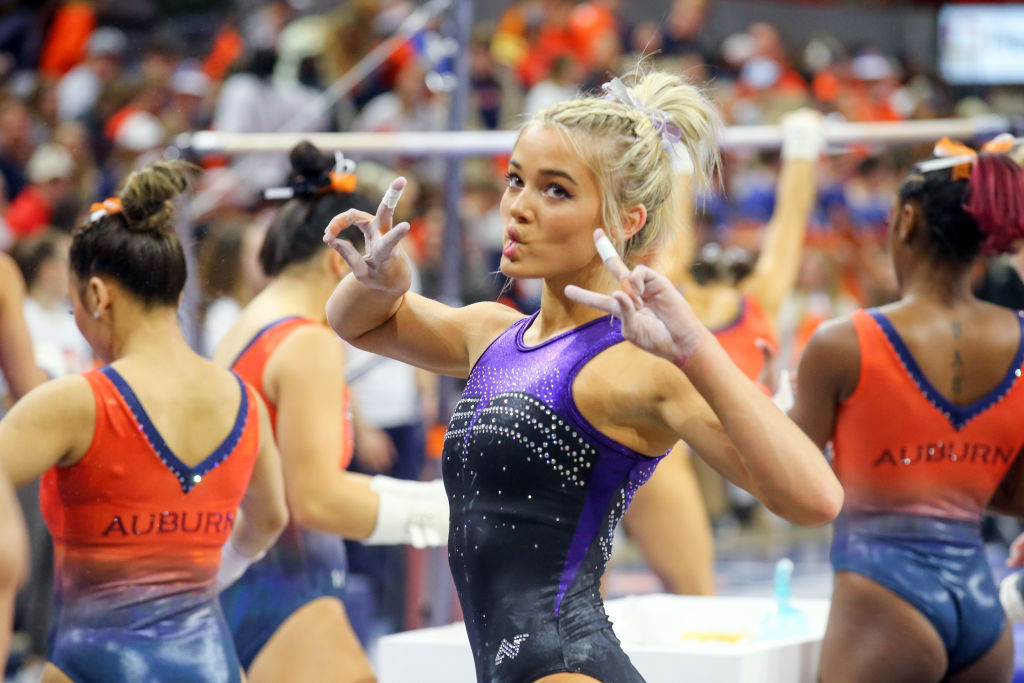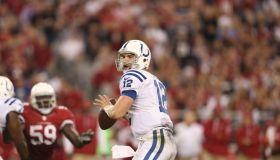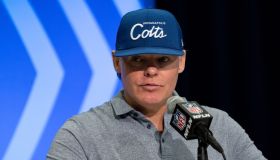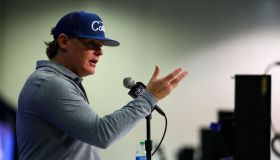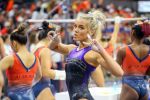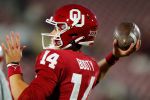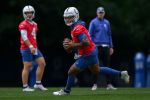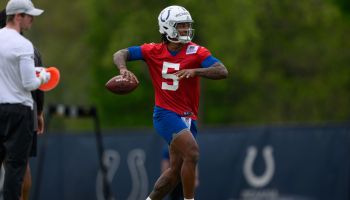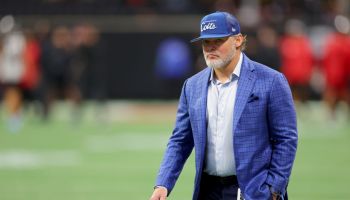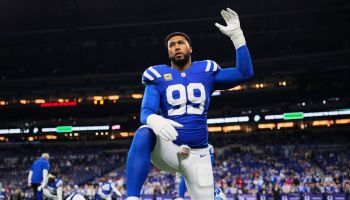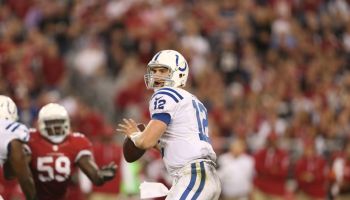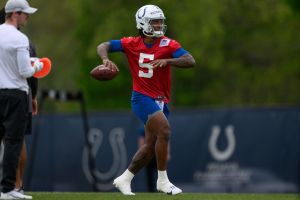
Source: Icon Sportswire / Getty
INDIANAPOLIS – There’s questions for Anthony Richardson to answer, just like there are for every rookie quarterback.
For Richardson there might be a few more though, or at least some more obvious ones.
When you look at Richardson’s college playing resume, two numbers stand out more than any other—54.8 completion percentage and 13 games started.
Those numbers associated with first-round picks at quarterback are unheard-of in the NFL.
Yes, Richardson’s physical traits (and mental makeup) are tantalizing enough for the Colts to believe he can be the outlier in this transition to the NFL, despite such questionable numbers in the accuracy and experience departments.
Why?
Let’s begin with the accuracy.
Chris Ballard acknowledges it’s a fair question on the completion percentage number Richardson had last year.
For a college QB with more than 300 pass attempts in one of the last three seasons, no one in the entire nation had a completion percentage number as low as Richardson’s 53.8 from last year (more than 170 guys qualified with more than 300 attempts in a season).
But the Colts are banking on a jump from Richardson in the accuracy department, with more issues in his shorter throws than those in the intermediate-downfield range.
“I think the one thing we’re seeing in the league now is guys you can work on and get them more accurate,” Ballard said on draft night. “Just footwork, fundamentals, there are certain things I think we can do and I think you’ve seen guys jump in our league. I think you’ll see him jump.”
Yes, you can find several present-day quarterbacks who have seen their accuracy/completion percentage numbers rise throughout a college career, and into the NFL. Unlike most of them though, Richardson’s ascension in that area will have to come at the professional level, and not as a Year Two starter in college.
Richardson has been busy working with QB coach Will Hewlett leading into the draft process to try and alter some footwork technique, becoming a more accurate QB when throttling down the velocity level, and connecting at a higher percentages of throws when rolling out to his right.
During the Colts rookie minicamp last weekend, Richardson explained more on some of the changes he’s undergoing.
“The five-step drop out of the gun. That’s definitely different. I never did that in college,” Richardson explained, as he did a 3-step drop out of the shotgun at Florida.
“(And) just speeding up my footwork. They always told me that in college I have to speed up my footwork. I’m always trying to work on that and get the timing right down with my receivers.”
The other major question with Richardson is projecting him into actual games at this level.
For NFL standards, Richardson’s 13 games of college experience is one of the smallest resumes ever for a first-round pick.
The quantity of reps Richardson has had is very low, which could be looked at optimistically (plenty of room to grow) or negatively (too raw to properly evaluate him).
And even the quality of Richardson’s reps—“playing in big moments”—is hard to gauge.
Yes, Richardson delivered late against Pac-12 Champ Utah and threw for 453 yards versus top-10 Tennessee. He also struggled mightily in a loss to fellow NFL-prospect Will Levis and then completed 33.3 percent of his passes in his final college game against rival Florida State.
What will Richardson be like in those big-time moments which inevitably rise on a frequent basis in the NFL? What about in December and January with major playoff implications on the line?
Simply, Richardson wasn’t in many of those for a .500 Florida team last year.
All of this, along with the oozing physical makeup, is what makes Richardson such a fascinating case study for the Colts to try and mold.
